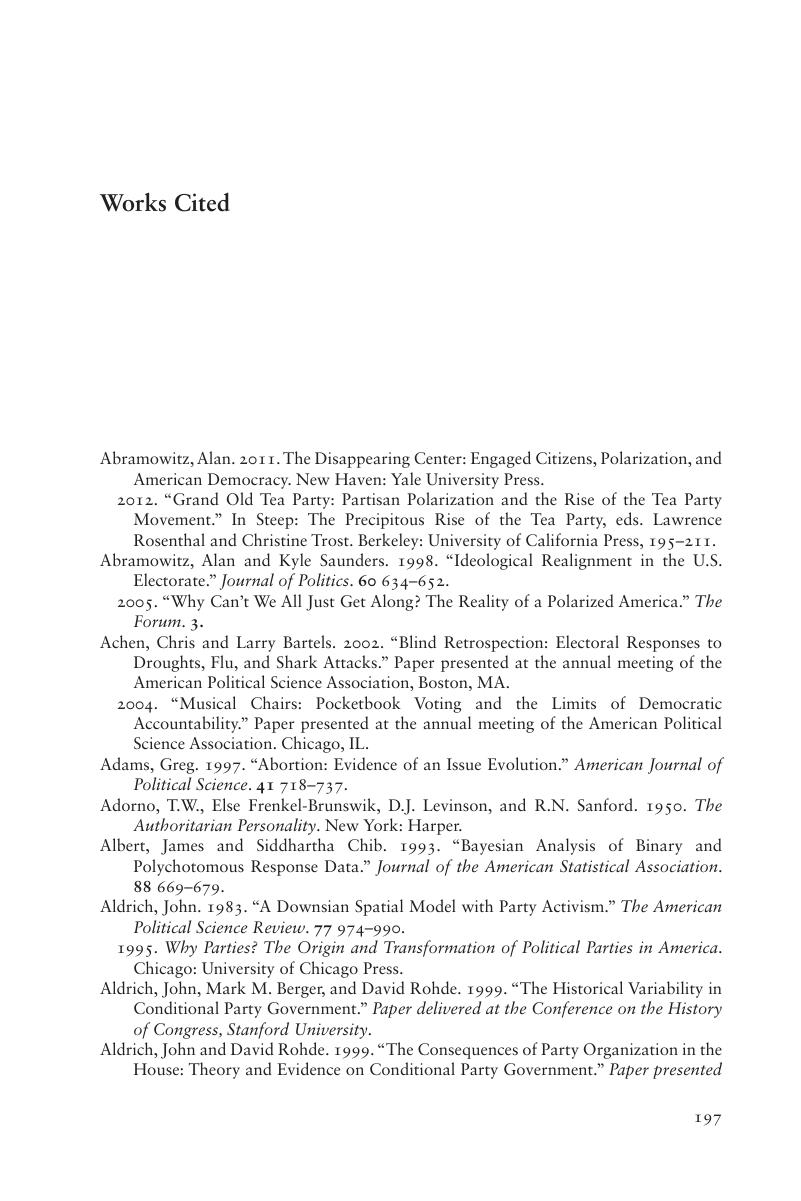Book contents
- Frontmatter
- Dedication
- Contents
- Figures
- Tables
- Acknowledgments
- 1 Introduction
- 2 The Coalition Merchants
- 3 Creative Synthesis
- 4 The Independent Development of Ideology
- 5 Ideology Remakes the Parties
- 6 Issue Politics in Ideological Context
- 7 Ideological Parties and Polarization
- 8 Conclusion
- Works Cited
- Index
- References
Works Cited
Published online by Cambridge University Press: 05 June 2014
- Frontmatter
- Dedication
- Contents
- Figures
- Tables
- Acknowledgments
- 1 Introduction
- 2 The Coalition Merchants
- 3 Creative Synthesis
- 4 The Independent Development of Ideology
- 5 Ideology Remakes the Parties
- 6 Issue Politics in Ideological Context
- 7 Ideological Parties and Polarization
- 8 Conclusion
- Works Cited
- Index
- References
Summary

- Type
- Chapter
- Information
- Political Ideologies and Political Parties in America , pp. 197 - 212Publisher: Cambridge University PressPrint publication year: 2014

